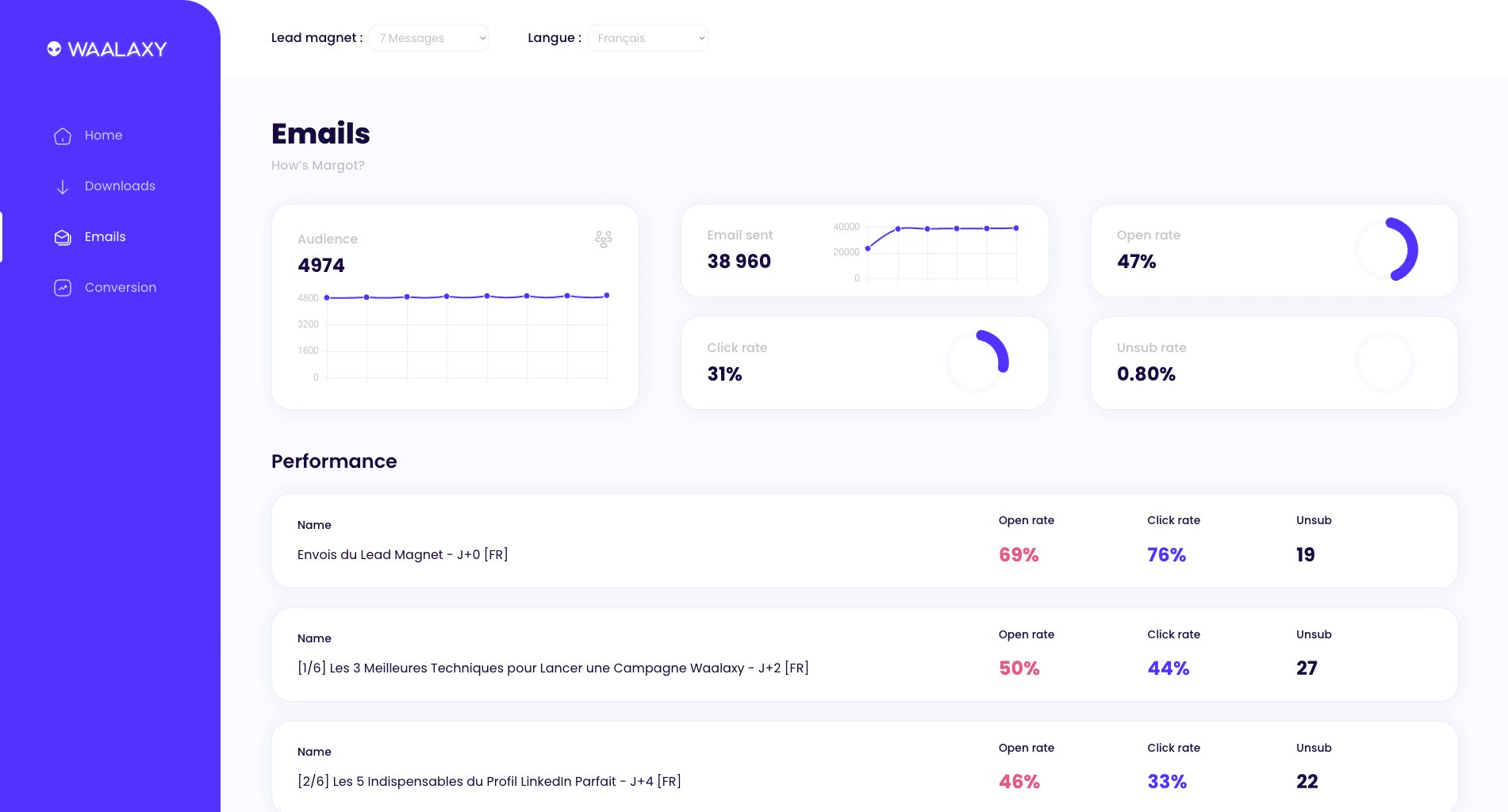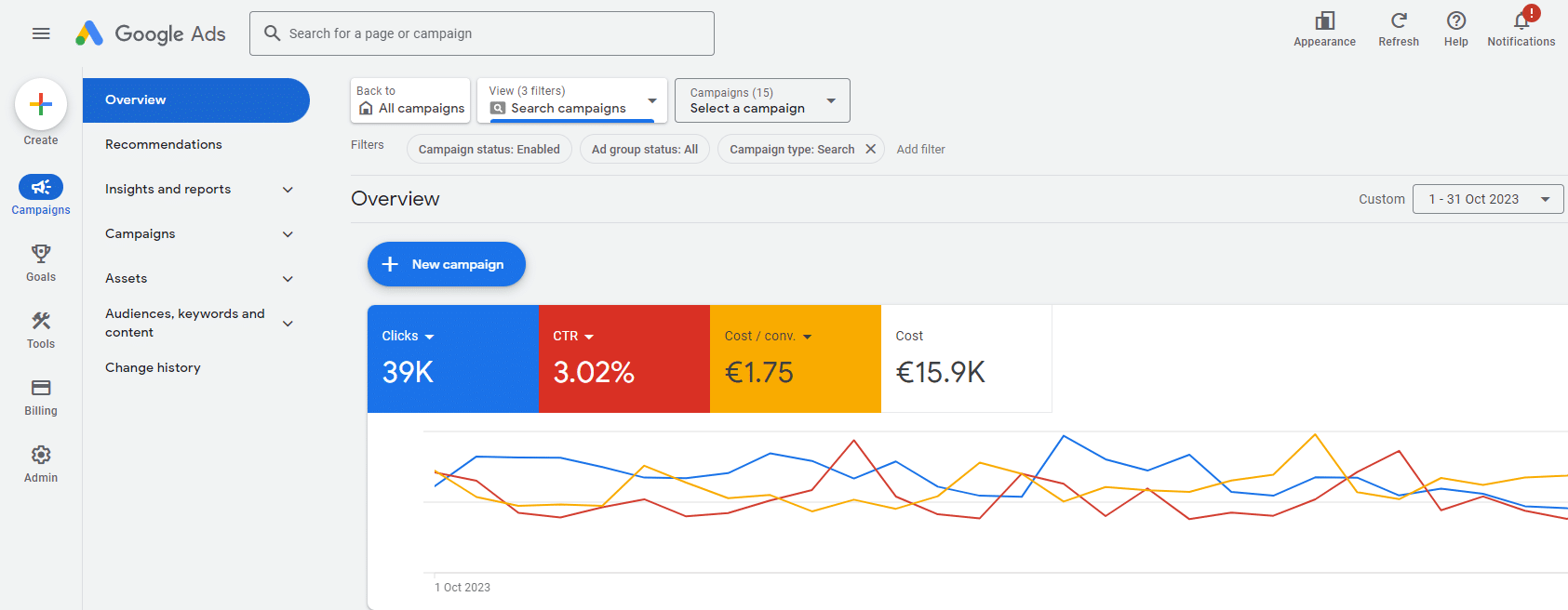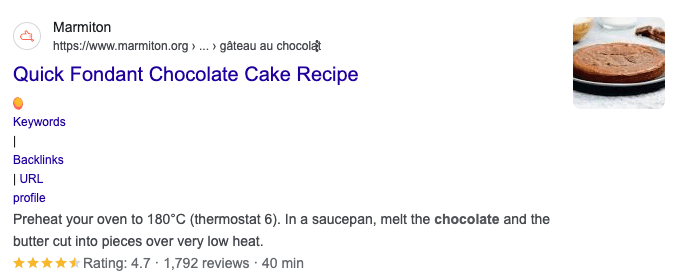These days, there’s one key indicator that can make all the difference between success and stagnation, and here, we’ll tell you how to calculate a CTR. 🐭
In this article, we’ll understand why it’s so important, and explain how to maximize yours. Whether you’re an SEO expert or a beginner, get ready to discover the keys 🔑 to success for increasing your click-through rate.
And above all, propel 🚀 your website to new heights in search engine rankings.
Here we go ! 🛩️
Different click-through rates for different formats
There are a multitude of rates, such as :
- Pay-per-click advertising.
- Cost-per-click.
- Pay-per-click (PPC).
- Pay per click campaign.
- Cost per thousand.
But today we’re more interested in click-through rates.
The click-through rate is a vital element for measuring the performance of your web pages in search engine results search engines. 🔦
It represents the percentage of people who click on your link per in relation to the number total number of people who have seen your page in the search results. 🖥️
We’re all looking for a high CTR because we want to generate quality traffic and increase our sales online visibility. However, click-through rates may vary depending on the format of the content element or ad.
That’s what we’re going to see right now. 👀
How to Calculate CTR ?
Average email click-through rate
This may vary depending on several factors, such as :
- 🟣 Business sector.
- 🔵 The quality of the mailing list.
- 🟣 The relevance of the email content.
- 🔵 Sending frequency.
- 🟣 The way the email is designed.
This means that for every 100 recipients of the email, around 2 to 5 people click on at least one link in the email.
Calculate your email click-through rate
Without further ado, here’s how to calculate the click-through rate emailing : ⬇️
For example, if you emailed 1,500 subscribers and 50 of them clicked on the links in the e-mail, the calculation would be:
(50 / 1 500) x 100 = 3,3.
Your click-through rate would then be 5%.
What is a good click-through rate for email marketing ?
A CTR of over 5% is considered excellent, while a CTR of less than 2% may indicate a need for improvement…
Keep in mind that this must be interpreted with other metrics such as open rate, click-through rate, etc. conversions and the return on investment (ROI). 👑
We asked Colas, our lead magnet expert 🧲, to give us some tips on how to increase the rate, here are his answers:
- 1️⃣ Sign emails.
- 2️⃣ Have an attractive subject line.
- 3️⃣ Create a personalized profile of a person who systematically sends e-mails.

Simply add adwords related to digital-marketing and a small call to action. 😇
How to calculate CTR click through rate Facebook ?
The formula for CTR on Facebook is simple:
For example, if your had received 200 clicks and was shown 10,000 times, the CTR would be:
(200 / 10 000) x 100 = 2.
Your message has a CTR of 2%.
What is a good click-through rate for Facebook ?
The average CTR on Facebook business page varies across industries and ad type, but, is typically in the range of 0.9% to 1.5%.
To improve your CTR and surpass the average, focus on
- Creating compelling ad creatives.
- Refining your targeting.
- Conducting A/B testing to optimize your campaigns.
How to calculate CTR click through rate for Google ads ?
The formula for CTR for Google ads is also simple because this is the same: ⬇️
For example, if your ad received 400 clicks and was shown 20 000 times, the CTR would be:
(300 / 10 000) x 100 = 3.
Your message has a CTR of 3%.
Here’s an example with our ads campaign. 👽

What is a good CTR for Google Ads ?
A good CTR typically falls between 2% and 5%.
Keep in mind that CTR goals should be specific to your campaign objectives. While a CTR of 2-5%, is a common benchmark, is a common benchmark, it’s essential to align your expectations with the nature of your advertising and your specific industry standards.
The definition of a “good” Click-Through Rate (CTR) for Google Ads can vary depending on factors such as industry, ad type, and campaign goals. However, as a general guideline, a good CTR typically falls between 2% and 5%.
What factors affect click-through rates ?
Factors that impact CTR can include vary according to context. However, some stand out every time, let’s analyze which ones together. 🔎
1) Catchy titles
A well-formulated title must contain keywords relevant for the subject while providing a benefit for the web user.
It should be concise and to the point, and should not exceed 60 to 70 characters to ensure that it is displayed correctly in the search results.
When it’s catchy, it encourages more people to click on the link to find out more. 😎

However, we advise you not to lie and promise the world, as a misleading title can result in a user experience negative bounce rate and a loss of confidence.
And we don’t like that. Neither does Google! 🫣
2) Convincing meta-descriptions
Meta descriptions accompany titles in search results and are crucial for encouraging Internet users to click on a link. We recommend using between 150 and 160 characters of text.
As you can see, it must meet the needs of users by highlighting information and, above all, the benefits of the page’s content.

3) Content structuring
Clear, logical organization of content with headings (H1, H2, etc.), concise paragraphs and bulleted lists makes reading more enjoyable for visitors ! 😇
As you can see, they indicate the structure of the content and enable users to navigate 🗺️ more easily on your site or website landing page and that’s what we want !
Hierarchical headers indicate the structure of the content, making it easier for users to navigate. A meticulous visual presentation can also make a page more attractive, encouraging more clicks.
4) Using images and rich snippets
Images attract attention and provide a visual overview of the page content, which can increase the attractiveness of your result in the search results.😇

Visit rich snippets these provide additional information directly in the search results like the rating stars prices, opening hours, etc.
This additional information helps users to make more informed decisions and to choose your link among the others.

If you combine the two, you can make your search result more attractive and informative, which can lead to a higher return on investment and higher click-through rate. 🔥
2 Tools for analyzing CTR
Now that you’ve understood what CTR is and how to calculate it according to type, let’s move on to a more-than-important step… 🥁 analyzing the results.
To do this, we recommend two of our favorite tools, namely Google Analytics and Google Search Console.
We’re off ! 🚀
1) Google Analytics
A powerful tool not only for analyzing CTR, but also for providing valuable information about how your site is discovered in search results and how users interact with them.
Among other things, it allows you to :
🟠 Have a list of the different sources of traffic to your website.
🟡 Discover the organic traffic that comes from search results as a result of your SEO strategy.
🟠 Filter data by date.
🟡 Compare different periods.
🟠 Detail performance by keyword or page.
🟡 Segment according to geography, devices, or traffic sources.
It also tracks visitor numbers and average session duration, the most popular pages and the bounce rate.
2) Google Search Console
Google’s free platform to help website owners monitor and manage to improve the visibility of their site in the results of Google search, welcome to Google Search Console!
Unlike Google Analytics, this tool focuses more on user behavior on your site, i.e., how your site is indexed and displayed in search results.
Here are some of the main features :
🔵 Search performance tracking : you can see how many times your site has appeared in search results and the CTR.
🔴 Indexing : you get information on which pages of your site are indexed by Google and any problems.
🟡 Sitemaps : you can submit sitemaps to help Google understand your site’s structure.
🔵 Crawl error : reports errors that could prevent Google from crawling your website.
🟢 Keyword performance : you have access to data on the keywords that drove users to your site.
🔴 Improved coverage : you can check and improve your site’s coverage by identifying duplicate pages or excluded pages of the 404 error type.
Conclusion : How to calculate CTR ?
To sum up, understanding the factors that influence CTR is essential to attracting your customers’ attention target audience 🎯 and encouraging them to click on your content.
If you combine the tools we’ve shown you ✚ you’ve figured out how to use the CTA. Not only will you be able to increase the number of clicks to your content, but also improve the user experience and achieve positive results for your online business. 🤖
So yes, it’s a long and ongoing process that requires attention and adaptation (a bit like a child after all), but it will have a positive impact on your online audience. 🤗
Frequently asked questions
What is the right click-through rate on LinkedIn ?
There are several metrics on LinkedIn, including the rate of click and the LinkedIn engagement rate.
Hera are some rough benchmarks for LinkedIn CTR :
- Sponsored Content (LinkedIn feed) : From 0,5 to 2%.
- Sponsored InMail campaigns : above 10%
- Display Ads : 0,1 to 0.5%.
In general, a correct rate on LinkedIn is between 2 and 5% of the total. 👀
What is a good reactivity rate ?
Also known as the response rate, it varies according to the context and the specific communication.
Indeed, this is a metric used to assess the responsiveness or engagement of a group or audience in various contexts, such as marketing, social media, or communication.
There are a few examples :
- 🔵 Social media engagement : a good reactivity rate might be measured by the number of likes, shares, comments, or interactions your posts receive compared to the total numbers of followers or reach.
- 🟣 Email marketing : be measured by the percentage of recipients who open your emails, click on links within them, or take a specific action.
- 🔵 Customer support : could be measured by the time it takes for a support team to respond to customer inquiries.
- 🟣 Chemical reactions : refers to how quickly a chemical reaction occurs under certain conditions.
It is estimated that around 10 to 20% that the reactivity rate is good. 😇
What is the difference between Click Rate and Click-Through Rate ?
Here’s the difference between the two :
1️⃣ Click rate :
- Expressed as a percentage and represents the overall effectiveness of an element in encouraging users to take action, such as clicking on a link.
- Metric that measures the total number of clicks an element (such as a link or button) receives, divided by the total number of times that element was presented or shown to users (impressions).
2️⃣ Click-Through Rate :
- Frequently used in online advertising to assess the performance of ads and evaluate their ability to generate clicks and drive traffic to a destination, such as a website.
- Specific type of click rate that measures the ratio of clicks on a specific element (usually an advertisement) to the number of times that element was displayed or viewed by users.
Now you know all about how to calculate CTR. See you soon ! 🐉












